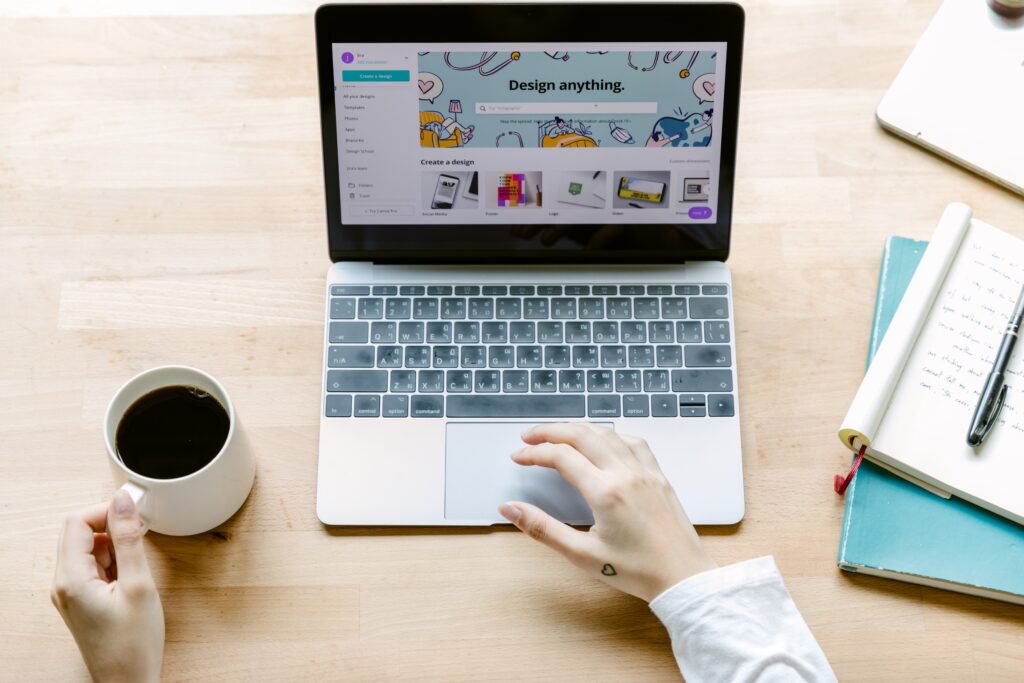Are you a small business owner needing help with web design? Has the thought of designing your own website, from scratch, given you sleepless nights? Well, that stops now! In this comprehensive step-by-step guide, we’ll show you how to create a stunning website without stressing out. You don’t need any prior knowledge or experience in programming — just some basic computer skills and creative drive is all it takes. We’ll go through everything from setting up domain hosting and creating pages to adding features like widgets and contact forms. So if you’re ready to get started on developing a website for your business, read on!
Understanding HTML and CSS basics
If you’ve ever been curious about web design, then you’ve probably come across the terms HTML and CSS. While they may seem like jargon to some, these two little acronyms hold a lot of power when it comes to designing websites. HTML is the language used to build the basic structure of a webpage, while CSS is what adds style and design to make it visually appealing. Understanding the basics of these two coding languages can be the difference between a mediocre website and a beautiful, well-designed one. Whether you’re a coding novice or a seasoned designer, taking the time to learn the fundamentals of HTML and CSS is a wise investment. So what are you waiting for? Let’s dive in!

Tips for creating an effective website layout
Your website’s layout is the first thing that visitors notice, and it’s essential to create an effective one to encourage them to stay and browse. Firstly, ensure that the design is visually appealing and easy on the eyes. You don’t want the website to be cluttered with too many images or text that could overwhelm visitors. Secondly, organise your content in a logical and easy-to-read format, preferably with headings and subheadings. This helps your visitors navigate through your website quickly and effortlessly. Lastly, make sure your website is mobile-friendly since most people use their smartphones to access the internet nowadays. Follow these tips, and you’ll create an effective website layout that will delight and engage visitors.
How to choose the right colours and fonts
Colour and font choices may seem like small details, but they play a huge role in the overall feel and effectiveness of your design. When it comes to choosing the right colours, it’s important to consider the emotion or vibe you’re trying to convey. Bright and bold colours can be attention-grabbing and energising while muted tones can create a calming and sophisticated atmosphere. As for fonts, there are countless options to choose from, but keep in mind that readability is key. A fancy script font may look pretty, but if it’s hard to read, it can hinder your message. Stick with clean and legible fonts, and consider using different weights or styles to create visual interest. By taking the time to make intentional colour and font choices, you can elevate your designs and make them more effective in communicating your message.
Developing a visually appealing design
In today’s digital age, having a visually appealing design can make all the difference in capturing a customer’s attention. It’s no longer just about the content, but also how it’s presented. A well-developed design can enhance the user experience by making it easier to navigate and understand the information being presented. From the choice of colour schemes to the placement of elements on a page, every detail is important in creating a cohesive and visually appealing design. Taking the time to develop a great design can not only increase engagement with your audience but also leave a lasting impression on potential customers.
Implementing user-friendly features such as navigation menus, search bars, forms, etc.
Creating a user-friendly website is essential for attracting and retaining visitors. One such way to achieve this is by implementing various features like navigation menus, search bars, and forms. Navigation menus make it easier for users to explore the site, while search bars allow them to quickly find what they are looking for. Forms are also great for collecting data and feedback from users. These features not only enhance the user experience but also make it easier for them to engage with your content. By making your website easily accessible, you can improve your user engagement and ultimately drive more traffic to your site.

Testing your website across devices and browsers
In today’s digitally-driven world, having a website that is accessible and user-friendly across multiple devices and browsers is crucial. Testing your website on different devices such as laptops, desktops, tablets, and smartphones ensures that users have seamless experiences no matter how they access your site. Additionally, with the vast number of browsers available, it’s important to test your website on various popular ones such as Chrome, Firefox, and Safari to ensure compatibility. Taking the time to test your site across devices and browsers can help you identify issues early on and avoid losing potential customers due to a poor user experience. So, take a step back, test your website, and make sure it’s ready to meet the needs of all users.
In conclusion, there’s a lot to consider when designing a website. Understanding HTML and CSS basics is essential for creating an effective website layout with the right colours and fonts. Once you have a good foundation, you can focus on visually appealing design and adding user-friendly features. Lastly, don’t forget to test your website across different devices and browsers to ensure everything works as expected. Ultimately, making sure your web design meets all of these criteria could be the key to drawing more people to your site! To achieve success online, take time to invest in a strong web presence that resonates with your target audience and accurately reflects your brand identity.